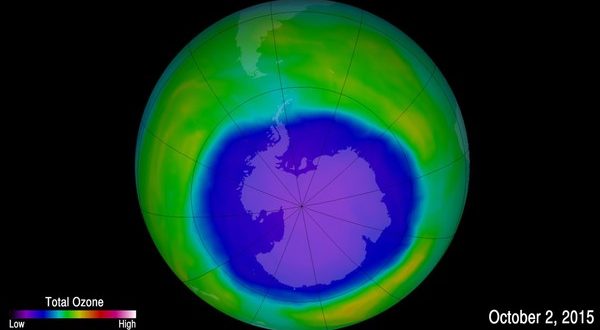A new research showing the infamous and massive hole in the Antarctic ozone layer has shrunk by some 4 million square kilometers illustrate what the world can do to solve a dangerous crisis if they heed warnings made by scientists.
The surprising findings, published in journal Science, come after experts reported that the hole was the biggest it had ever been. However, well-known ozone hole expert, professor Susan Solomon from the Massachusetts Institute of Technology, said that the growth in the hole in 2015 was due to the eruption of Calbuco volcano in Chile that increased particles in the Antarctic stratosphere.
“The reason we have an ozone hole is because Antarctica is so cold that clouds form in the Antarctic stratosphere, and chlorine can react on the surfaces of those cloud particles. Volcanic particles are one thing that can serve as the ‘seed corn’ for those clouds, so a volcanic eruption will increase the clouds, and slow down the healing,” Solomon told ABC.
Solomon believes that this discovery will help n the fight against climate change. She said that the planet is responding to the actions the world took by banning chlorofluorocarbons (CFCs) and other such chemicals. She urged people to take such actions more to help the environment heal.
The ozone hole over Antarctica was first discovered in 1985 and in 1987 there was an international decision to phase out the use of chlorine-containing gases such as CFCs. These gases were identified as the main cause for damaging the ozone layer.
However, Paul Newman, who runs NASA’s Arctic Ozone Watch website at Goddard Space Flight Center in Greenbelt, Maryland, is not convinced by Solomon’s finding that only half of the four million square kilometre shrinkage trend was due to a reduction in bromine and chlorine. The other half seemed to be due to weather.
“If we can’t explain half the signal, then can we really explain the 50% of the signal we think we know? She’s uncovered a real scientific puzzle here,” Newman told Science Magazine.
He added that weather effects seem to cancel out on average thereby resulting in no trend. He believes Solomon’s finding could point to a problem with her model or may also reflect a real shift in polar weather brought about by climate change.
Agencies/Canadajournal

 Canada Journal – News of the World Articles and videos to bring you the biggest Canadian news stories from across the country every day
Canada Journal – News of the World Articles and videos to bring you the biggest Canadian news stories from across the country every day

